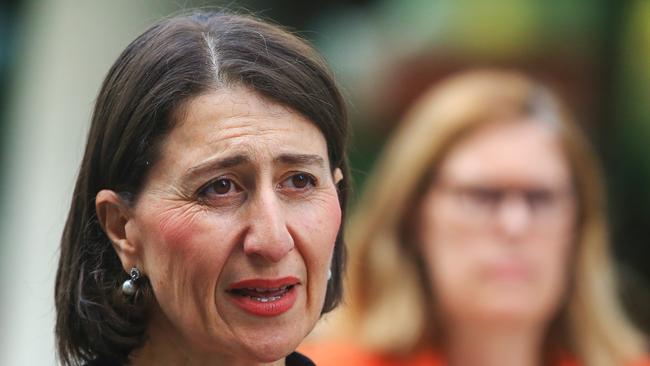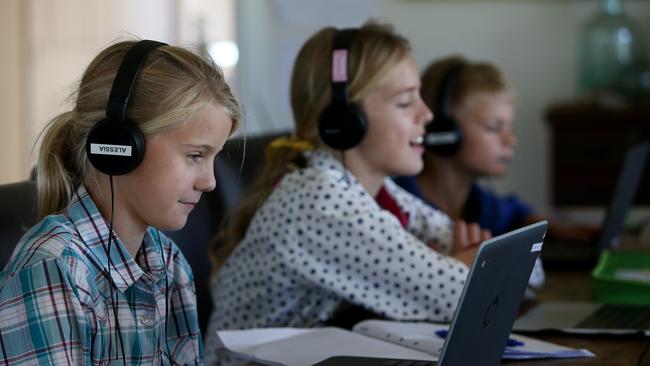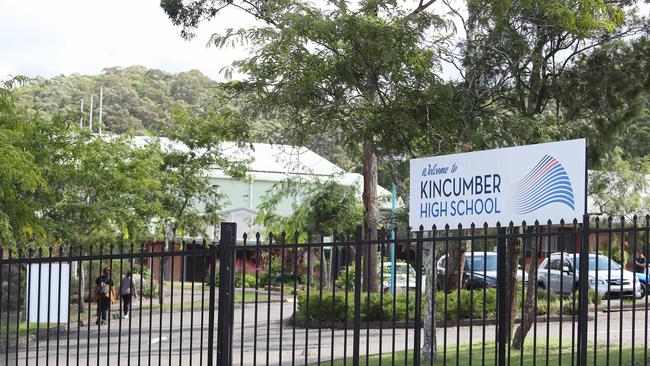Coronavirus Australia: Shutting schools won’t help control virus, study shows
As NSW students prepare to return to classrooms in term two, evidence from past outbreaks shows schools are one of the safest places for children to be.
Opinion
Don't miss out on the headlines from Opinion. Followed categories will be added to My News.
- Gladys Berejiklian reveals schools to return gradually in Term 2
- NSW suburbs with the most COVID-19 fines
As students across NSW prepare to return to school one day a week next month, scientific evidence is mounting that schools are one of the safest places for children to be – and that closing schools is a far less effective way to slow the spread of coronavirus than other social distancing measures.
According to research published this month in The Lancet shutting classrooms is one of the least significant things governments can do to stop the spread of diseases – while also causing serious harm to economies.

“Data from the SARS outbreak in mainland China, Hong Kong, and Singapore suggest that school transmission played no substantial role in the outbreak, and that school closures and other activities such as school temperature monitoring did not contribute to control of infection transmission”, the researchers write.
What’s worse, the researchers also suggest that the absenteeism from work – particularly among health care workers – caused by forced school closures could cause significant damage to economies and overall wellbeing.
“A 2010 economic modelling analysis of school closures as mitigating interventions during influenza outbreaks suggested that 4-week or 13-week closures reduced the clinical attack rate minimally but markedly increased the economic cost to the nation, in particular through forced absenteeism by working parents, in the UK, France, Belgium, and the Netherlands”, the researchers write.
The Lancet review, entitled “School closure and management practices during coronavirus outbreaks including COVID-19: a rapid systematic review”, looked at hundreds of studies from around the world reviewing the effectiveness of school closures in stopping the spread of both influenza and SARS, as well as coronavirus monitoring,
According to another cited by the authors, prolonged 8-week school shutdowns to slow influenza outbreaks can cause as much as a three per cent dip in GDP – while doing little to slow the rate of infection.

Instead of shutting down schools entirely, the review suggests that principals and education departments change practices to make going to school safer for children, teachers, and parents.
“Potential practices include suspending affected classes or year groups, or changing the school organisation structure to reduce student mixing (eg, by closing playgrounds, cancelling non-essential activities and meetings, keeping students in constant class groups or classrooms, increasing spacing between students in classes, shortening the school week, and staggering school start and lunch or break times across year groups or classes)”, the study says.
“In the 2009 H1N1 influenza pandemic, Taiwan instituted class suspensions rather than school closures, facilitated by keeping students in a homeroom class with a core teacher and having other teachers routinely moving between classes. Studies suggest that this approach was an effective social distancing measure in this outbreak while reducing social disruption.”

MORE NEWS
Every TAFE course in NSW you can do for FREE
Drive through dresses: Westfield’s contactless shopping service
This advice is similar to the guidance on schools given by the Australian Health Protection Principal Committee earlier this month, which among other things advised “adapting activities that lead to mixing between classes and years, including reduced use of common areas and reduced after-school and inter-school activities … where possible, adding flexibility to the work day by staggering start and finish times, recesses, lunch breaks and other key transition times, when mixing may occur between classes and year-levels (and) where possible, avoiding close-proximity queuing and encouraging increased space between students, for example, by placing markings on the floor.”
Schools in NSW are due to open one day a week from May 11 with the aim to return all students to school full time in Term 3.

